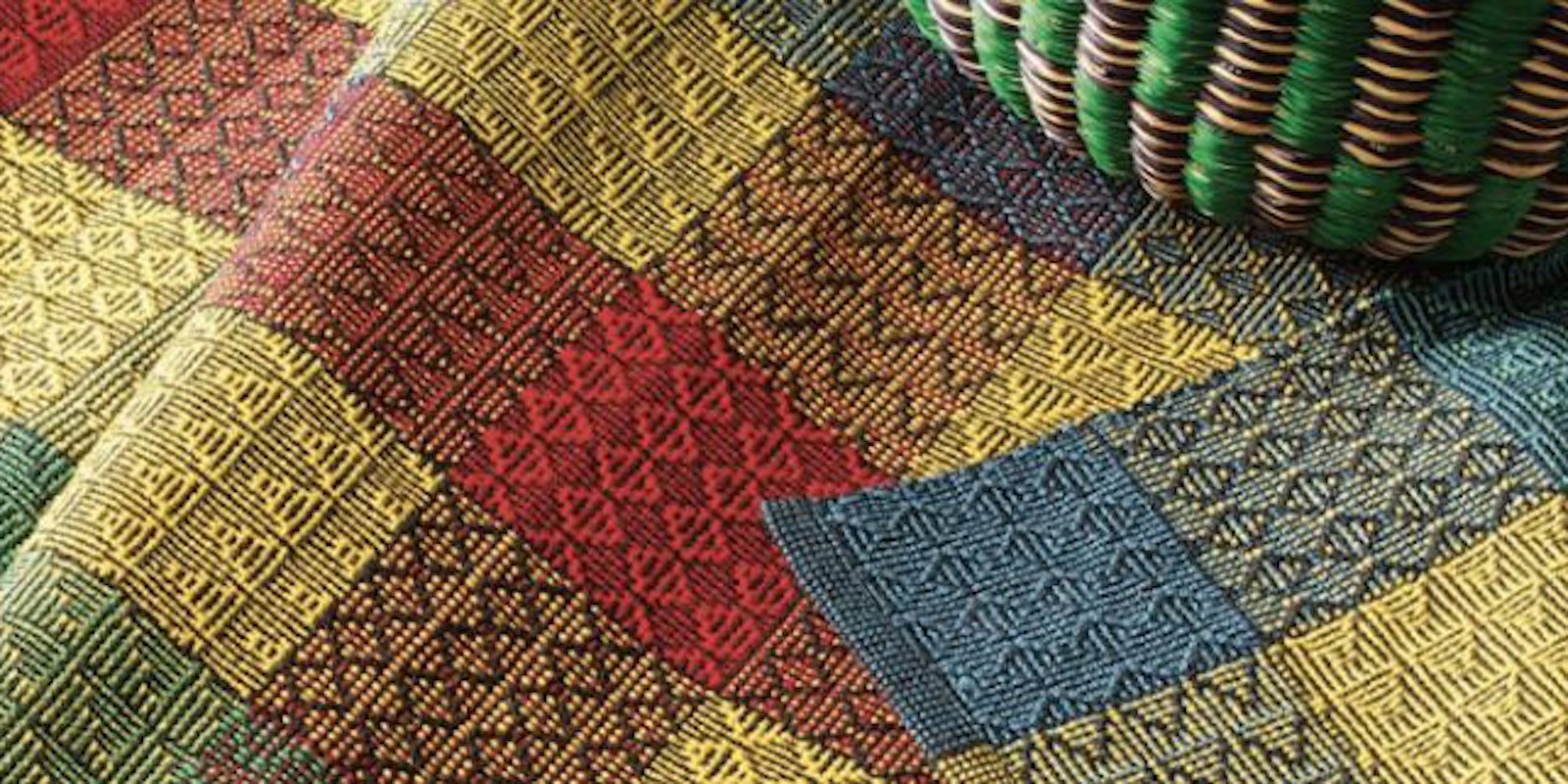 | |
| Jean Korus explores shadow weave in her "Shadow Weave Gamp" |
Did you know that Mary Meigs Atwater invented shadow weave? Of course, she invented Atwater-Bronson lace, too. She also rediscovered the inkle loom, I just found out, and introduced it to American handweavers. People probably told her “It’s all been done before,” too, the way they tell us, but she just didn’t listen. I know this fact about Mary Atwater and shadow weave because I’ve been living, breathing, writing, reading, and weaving shadow weave for the last couple of months. First, I worked on a Best of Handwoven, Technique Series: Shadow Weave. It’s one of the technique eBooks, so it has articles on how to design shadow weave and other color-and-weave fabrics by Mentors, such as Sharon Alderman, Kathryn Wertenberger, and Margaret Windeknecht.
 | |
 | |
| Margaret Windeknecht's drafts for rosepath twill and shadow weave |
I used my computer weaving software to check the drafts in the ebook. Shadow weave is a color-and-weave technique, which means that the design you see in the cloth is not the interlacement the threads are making but instead the contrast between dark warp and weft threads and light warp and weft threads. With computer weaving software, you can go back and forth from a color-effect drawdown to a structure drawdown—easily. This means you can play with changing the color order, the block order, inverting the tie-up and treadling—dozens of little acts that give you entirely new designs with a click of the mouse. How did Mary Atwater, I sometimes wonder, come up with so many design ideas, so many structural inventions, so many variations on a theme without the aid of a computer? Did she train her mind to visualize the interlacements, making changes in the treadling in her head and picturing their effects on the drawdowns? Or did she have to write out everything on paper?
I’m sure she asked herself lots of What ifs. She came to shadow weave, apparently, from warp rep. In warp rep, two colors alternate in the warp. Two wefts alternate, one thick and one thin, so that the warp color raised for the thick pick shows on the face of the cloth. What made her think: What if I space the warp threads for a balanced weave and alternate the same two colors in the weft as alternate in the warp? That “what if” sure seems like a giant leap!
The January/February 2012 issue of Handwoven also focuses on shadow weave—plus other members of the color-and-weave family. The projects in it prove that weavers have not stopped asking “What if.” Mary Atwater, through her through her Shuttle-Craft Guild Bulletin, made sure that her discoveries were available to all her readers so that they could ask “What if” and travel in new directions. All the magazines and books that form our weaving literature serve the same purpose. They give us ideas to pursue, and every once in awhile we come up with something new. Just wait ‘til you see Jannie Taylor’s shadow lace shawl in the next issue of Handwoven.

P.S. Virtual and in-person courses are another great way to explore and learn about shadow weave. In Introduction to Shadow Weave, award-winning weaver and teacher Jannie Taylor introduces you to shadow weave and its dazzling patterns. She's ready to share her years of experience learning how to weave shadow weave and help you discover all its magical possibilities. Meet Jannie and hear about what she hopes you'll get from her course:

